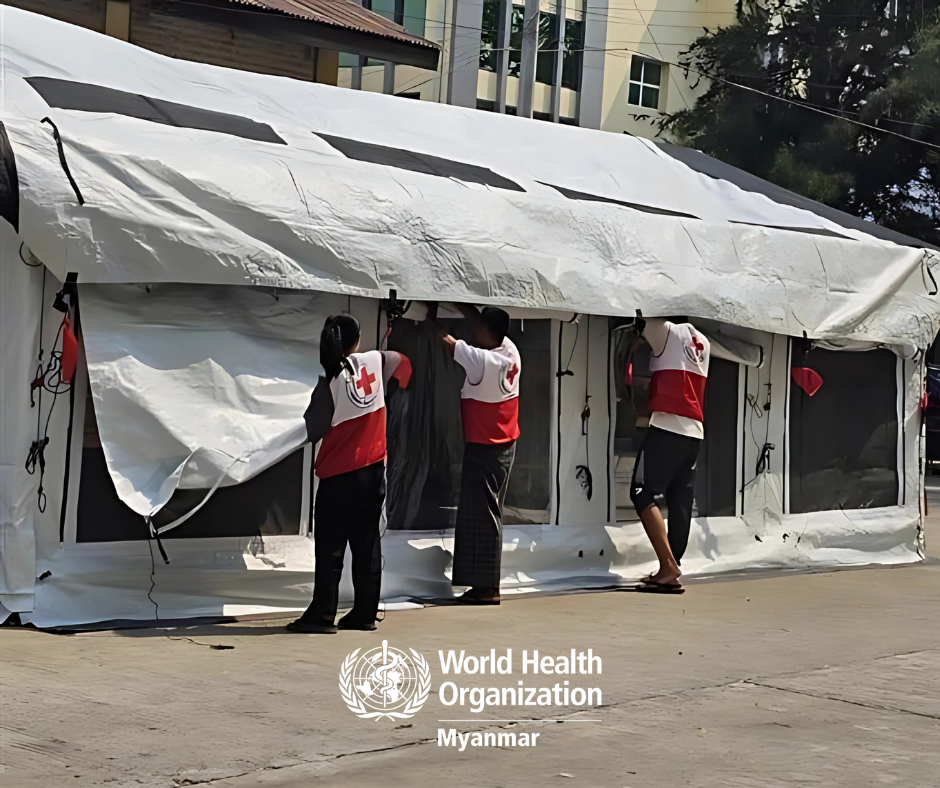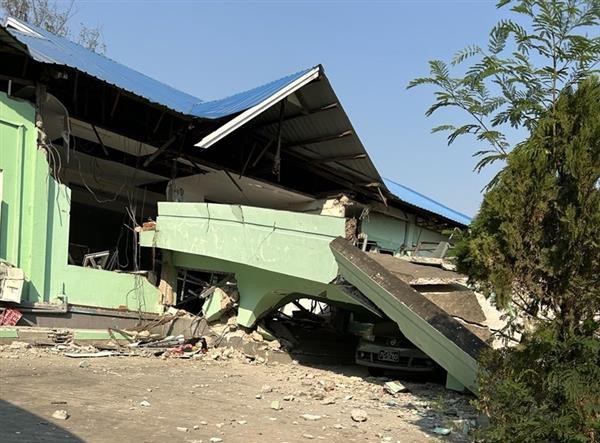As hospitals across earthquake-affected Myanmar struggle to cope with the overwhelming number of injured, the World Health Organization (WHO) has scaled up its emergency health response with over 60 tons of medical supplies, including mobile medical tents, surgical kits, and essential medicines now reaching frontline responders.
In the wake of the 7.7 magnitude earthquake that struck central Myanmar on 28 March, thousands of people are in urgent need of trauma care, surgical interventions, and treatment for disease outbreaks.
According to initial assessments, five health facilities—including three public hospitals, one private hospital, and one additional health center—have been completely destroyed, while another 50 facilities, including 32 hospitals and 18 other health centers, have sustained partial damage.
With infrastructure compromised and patient numbers surging, access to healthcare has become nearly impossible in many of the worst-hit areas.
To bridge this gap, WHO’s support is not just about volume—but adaptability. The 60-ton shipment includes 197 Interagency Emergency Health Kits, 280 trauma and emergency surgery kits, and 60 multipurpose medical tents—designed to deliver critical services where buildings no longer stand.
“In these tents, patients with fractures, wounds, and shock are being stabilized. They are functioning as mobile health clinics—delivering care where there are no longer walls,” said a WHO emergency team member on site in Mandalay.
The tents, currently being deployed in areas like Mandalay and Naypyidaw, serve a dual purpose: triage and treatment zones, and temporary extensions of overwhelmed hospitals. Each structure is equipped to support emergency health workers with shelter, patient beds, basic treatment zones, and sanitation facilities.

The trauma and surgical kits are equally vital—each set equipped with tools and supplies to perform urgent procedures in austere environments. With health workers working around the clock, the kits are enabling thousands of patients to receive care for crush injuries, lacerations, infections, and other complications resulting from building collapses and delayed treatment.
“This is not just about logistics—it’s about restoring access to care, restoring hope,” said Dr. Thushara Fernando, WHO Representative to Myanmar. “The mobile units are allowing us to treat patients who would otherwise have nowhere to go.”
WHO continues to coordinate with the relevant local health authorities and international partners to ensure equitable and timely delivery of support. Additional deployments of Emergency Medical Teams (EMTs) and shipments from WHO’s logistics hub in Dubai are also underway.
As the days pass since the earthquake struck, the need for sustained, flexible, and decentralized care remains urgent. WHO’s approach—combining trauma care, emergency supplies, and mobile facilities—is offering critical lifelines in a crisis where every hour counts.
The World Health Organization is a specialized agency of the United Nations responsible for global public health. It is headquartered in Geneva, Switzerland, and has six regional offices and 150 field offices worldwide.
DVB publishes a diversity of opinions that does not reflect DVB editorial policy. We’d like to hear what you think about this or any of our stories: [email protected]



